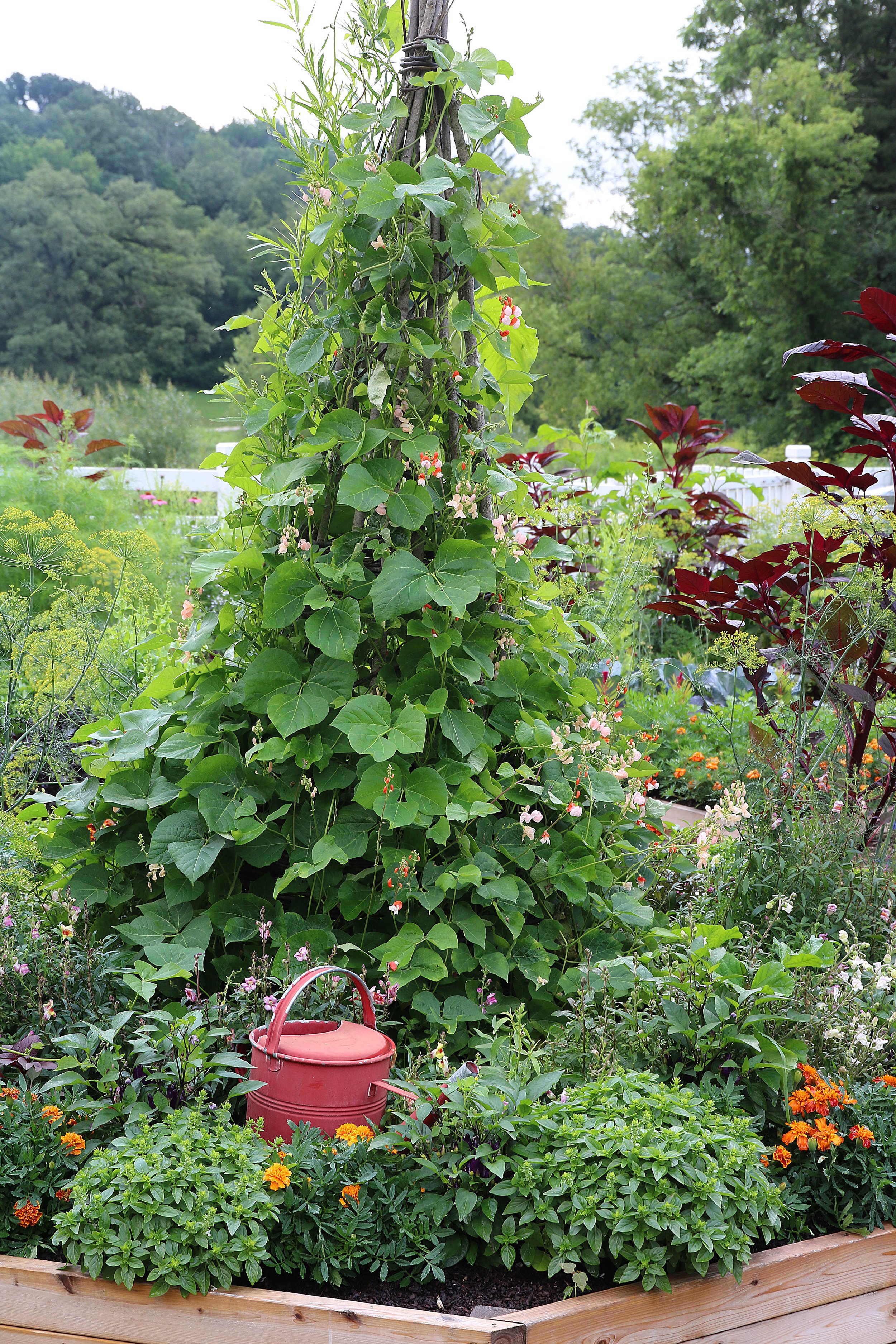Companion planting for a healthier, happier garden
/This raised bed in Diane’s Garden at Seed Savers Exchange’s Heritage Farm showcases many plants that shine in companion-planted arrangements.
It’s a fact.
Strategic planning is part of any good garden design, and companion planting is one of the best strategies to help gardeners do more with any space, no matter how big or how small. Companion planting, as defined by the Oxford English Dictionary, is “the close planting of different plants that enhance each other's growth or protect each other from pests.” Taller plants, for example, can provide shade for ones closer to the ground, and some plants (hello, marigolds and nasturtiums!) can repel pests for their neighbors. Yes, plants flourish with friendships too.
The Old Farmer’s Almanac cites numerous benefits to planting certain crops together, among them deterring pests, attracting beneficial insects such as bees and butterflies, providing shade and natural support, improving soil fertility—some crops, like beans and peas, add nitrogen to soil—and suppressing weeds. And while there are countless positive pairings of plants—entire books are devoted to the topic—some combinations rise to the top more often than others.
So what are a few of the tried-and-true companion plants for vegetables in any garden?
Basil protects tomato plants by thwarting common garden pests.
A true workhorse in the garden, the marigold benefits many vegetable crops, especially tomatoes, by acting as a “trap crop” for aphids.
Thyme can deter potato beetles, making it a perfect pairing for potato plants.
Another “trap crop,” the colorful nasturtium attracts aphids and thus prevents them from attacking other plants.
Zinnia blooms attract ladybugs, which feed on pests like aphids.
Here at Heritage Farm, Diane’s Garden, planned and tended each year (for more than 30 years!) by Diane Ott Whealy, SSE co-founder, showcases a variety of companion-planting pairings each spring and summer. In 2021, for example, visitors found beautiful ‘Red Marietta’ marigolds thriving next to hearty ‘Black Hungarian’ peppers, colorful ‘Bull’s Blood’ beets prospering next to striking purple verbena flowers, and gorgeous purple cabbage flourishing next to gloriously pink ‘Amish Cockscomb.’ “Everything has a purpose in my garden, whether for attracting pollinators, for producing food, or for creating beauty,” says Diane succinctly. (Her go-to resource when she is seeking a great pairing? Great Garden Companions by Sally Jean Cunningham.)
Marigolds and parsley are featured “companions” in a raised bed in Diane’s Garden at Heritage Farm.
Diane’s Garden has also long been home to many volunteers like ‘Kiss-Me-Over-the-Garden-Gate’ flowers and ‘Grandma Einck’s’ dill, and Diane praises these garden volunteers as her best companions. “I really respect the volunteers because I know that when they come up, it is safe to put my garden in,” she says. “I learn so much from them.”
Volunteers aside, what are some of Diane’s favorite garden combinations? “I like them all,” she says. “I don’t really have favorites.” She does, however, have some go-to crops. Carrots are a must in her garden: “The foliage is beautiful, and you can use it to outline a box or a pot,” she says. (And, yes, she notes, carrots do love tomatoes.) She favors okra for its “interesting foliage and sculpture-like growth” and zucchini for its blossoms. And basil, especially ‘Globe’ basil, will always be on her garden short list, as will borage, verbena, snapdragons, and the marvelously hard-working marigolds.
“I have never seen flowers, herbs, and vegetables that did not look beautiful together, no matter how they are planted,” says Diane.
Want to learn more? From Great Garden Companions and the Old Farmer’s Almanac to the classic Carrots Love Tomatoes, there are many great resources on companion planting available for anyone who wants to delve deeper into this topic.















